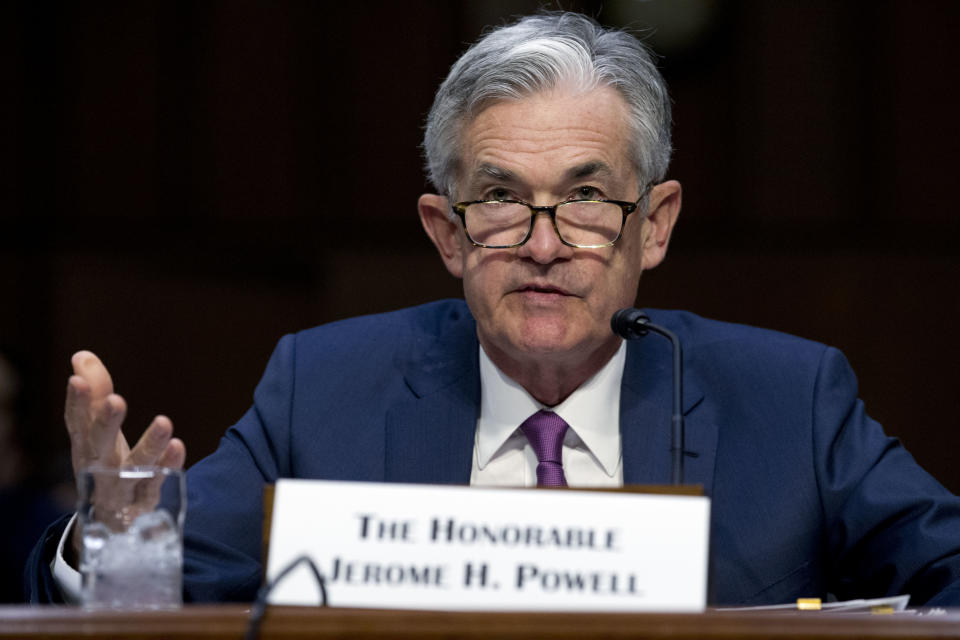What Fed Chair Powell sees when he looks at the flattening yield curve

Federal Reserve chair Jerome Powell is not explicitly concerned about the flattening Treasury yield curve.
Speaking before members of the Senate Banking Committee on Tuesday, Powell was asked by Senator Pat Toomey (R-Pa.) about the declining spread between short-term and long-term Treasury rates. Toomey explicitly referenced the narrowing of the spread between two-year and ten-year Treasury notes, which was sitting at 25 basis as of Tuesday morning, the slimmest margin in ten years.
The yield curve has become a top of mind issue for investors in recent months because an inversion of the yield curve — or short-term rates rising above long-term rates — has preceded each recession since World War II.
“Some people are concerned that a flattening curve or inverted curve correlates with economic recession,” Toomey said. “Here’s my question: does a dramatic change in the shape of the yield curve in any way influence the trajectory you guys are on with respect to normalizing interest rates and the balance sheet?”
And the short of Powell’s answer was essentially, “No.”
“I think what really matters [about the yield curve] is what the neutral rate of interest is,” Powell said.
“And I think people look at the shape of the curve because they think that there’s a message in longer-run rates — which reflect many things — but that longer-run rates also tell us something, along with other things, about what the longer-run neutral rate is. That’s really, I think, why the slope of the yield curve matters. So I look directly at that.”
In other words, Powell’s answer suggests that his view of the yield curve allows the Fed to understand the market’s interpretation of how far the central bank is from having policy at a neutral setting where rates are neither too low nor too high. In this framework, the flattening yield curve today suggests the Fed’s benchmark interest rate is closer to its neutral level than its current forecasts may indicate.

“In other words,” Powell continued, “if you raise short-term rates higher than long-term rates then maybe you’re policy is tighter than you think, or it’s tight anyway. I think the shape of the curve is something we’ve talked about quite a lot. Different people think about it in different ways, some people think about it more than others. I think about it as really the question being what is the message from the longer-run rate about the neutral rate.”
Powell himself has already said that he is not concerned about an inverting yield curve, saying in response to a question posed by Yahoo Finance at the Fed’s March meeting that inverted yield curves often responded to situations in which inflation pressured the economy which in turn led to recession.
Four months later, with the yield curve continuing to flatten, Powell’s view of the curve is still not one of alarm. Instead, the Fed chair sees a market-based assessment of how far the Fed is or is not from its policy goal of setting rates at a level such that the economy achieves full employment and price stability.
And right now, the message from the market seems to be, “pretty close.”
—
Myles Udland is a writer at Yahoo Finance. Follow him on Twitter @MylesUdland

